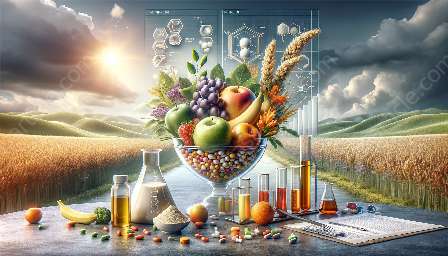When we think of nutrition, we often focus on the dietary needs of humans and terrestrial animals. However, the realm of nutrition extends far beyond the land, delving into the depths of aquatic environments. In this comprehensive exploration, we will unravel the complexities of aquatic plant nutrition and uncover its interconnectedness with aquatic animal nutrition and the broader field of nutrition science.
The Fundamentals of Aquatic Plant Nutrition
Aquatic plants, such as water lilies, water lettuce, and hornwort, are vital components of aquatic ecosystems. Just like their terrestrial counterparts, these plants require essential nutrients to thrive and contribute to the overall health of their environment. The key nutrients for aquatic plants include carbon, nitrogen, phosphorus, potassium, calcium, magnesium, and sulfur, as well as micronutrients such as iron, manganese, zinc, and copper.
Carbon, obtained from carbon dioxide in the water, serves as the primary building block for plant growth. Nitrogen, primarily acquired in the form of nitrates and ammonium, is essential for the synthesis of proteins and chlorophyll. Phosphorus plays a crucial role in energy transfer processes within the plant, while potassium regulates stomatal activity and enhances resistance to water stress. Calcium and magnesium are integral for cell wall structure and various enzymatic processes, and sulfur contributes to the formation of essential amino acids.
Understanding the Nutrient Uptake Mechanisms
Aquatic plants have evolved intricate mechanisms to absorb and utilize these vital nutrients from their surrounding water. The roots of aquatic plants play a key role in nutrient uptake, absorbing water as well as dissolved nutrients. Some plants may also have specialized tissues, such as root hairs, that increase the surface area for nutrient absorption.
Moreover, aquatic plants can uptake nutrients through their leaves and stems. Their leaves, equipped with stomata and a waxy cuticle, can absorb nutrients directly from the water. Through these various uptake mechanisms, aquatic plants maintain a delicate balance of nutrients essential for their growth and survival.
Interplay Between Aquatic Plant Nutrition and Aquatic Animal Nutrition
The relationship between aquatic plant nutrition and aquatic animal nutrition is a harmonious and interconnected one. Aquatic plants serve as a fundamental source of food and nutrients for a wide array of aquatic animals, including fish, turtles, snails, and various invertebrates. By consuming aquatic plants, these animals obtain essential nutrients for their growth, development, and overall well-being.
Furthermore, the presence and health of aquatic plants directly impact the environmental conditions of the aquatic habitat. Healthy and thriving aquatic plants contribute to water quality by absorbing excess nutrients, providing oxygen through photosynthesis, and offering shelter and spawning sites for aquatic animals. In turn, the well-being of aquatic animals is intricately tied to the health of the aquatic plant community, as they rely on the plants for food, protection, and habitat.
The Role of Nutrition Science in Optimizing Aquatic Environments
Nutrition science plays a pivotal role in understanding and optimizing the nutrition of both aquatic plants and animals within their respective environments. By studying the nutrient requirements, uptake mechanisms, and interactions between aquatic plants and animals, nutrition scientists can contribute to the development of balanced diets and optimal feeding practices for aquatic animals.
Furthermore, nutrition science drives research and innovations in aquaculture, shaping the cultivation of aquatic plants and the production of nutritious feeds for aquatic animals. Through the application of scientific knowledge, nutritionists and aquaculturists can enhance the sustainability and productivity of aquatic environments, benefiting both the plant and animal populations within these ecosystems.
The Path to Balanced Aquatic Ecosystems
As we unravel the intricacies of aquatic plant nutrition and its interconnectedness with aquatic animal nutrition and nutrition science, it becomes evident that achieving balanced and thriving aquatic ecosystems requires a holistic approach. By acknowledging the fundamental roles of nutrients and balanced diets for both aquatic plants and animals, we pave the way for sustainable and harmonious aquatic environments.
Through ongoing research, education, and collaboration across the fields of aquatic plant nutrition, aquatic animal nutrition, and nutrition science, we can embrace the complexities of aquatic ecosystems and work towards their preservation and optimization for generations to come.

